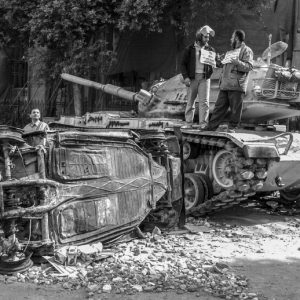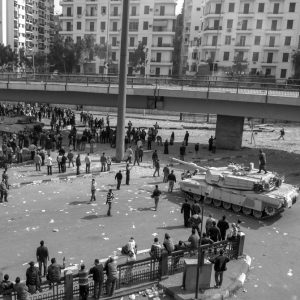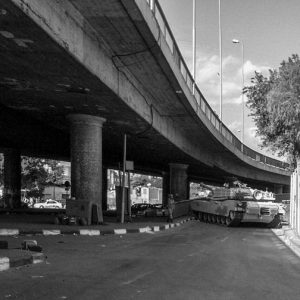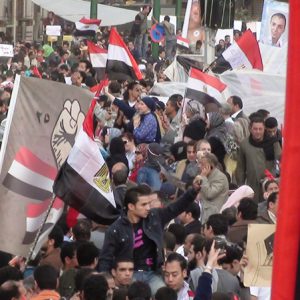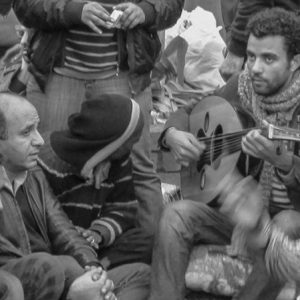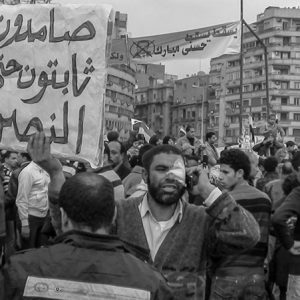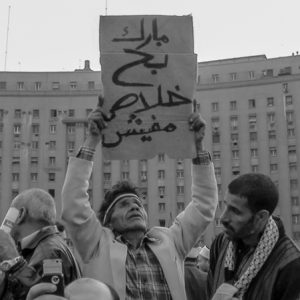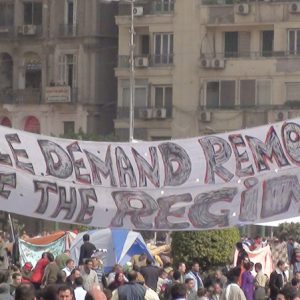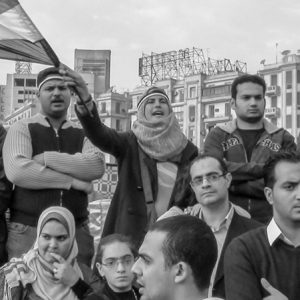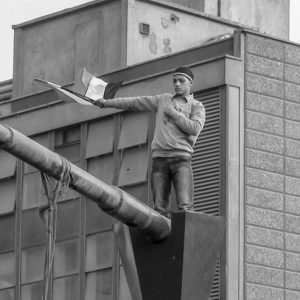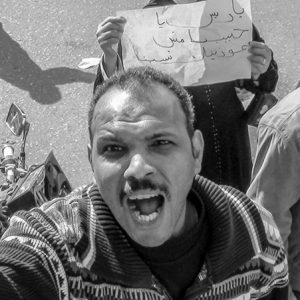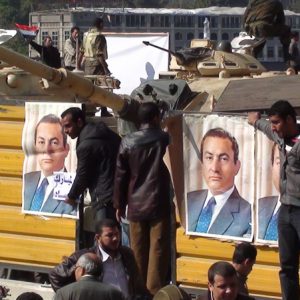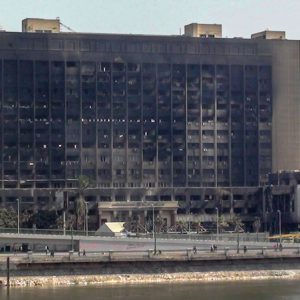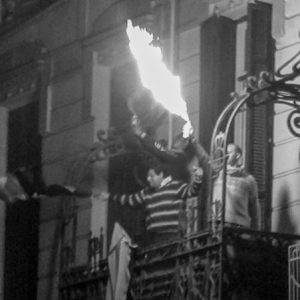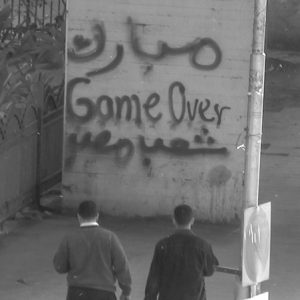18 Days on Tahrir Square
On January 25, 2011, a protest erupted in Cairo that would grow into a mass movement over 18 days, in the resignation of President Hosni Mubarak. Tahrir Square, which means translated „liberation square“, became the symbolic and physical heart of the uprising. Unlike other revolutions with clear emblems—the carnations in Portugal (1974) or jasmine in Tunisia (2010) — Egypt’s uprising found its symbol in a date. The 25th of January marked the beginning of a wave of political unrest that would reshape the nation’s trajectory.
Tahrir Square transformed into a space of remarkable solidarity. People from all social, religious, and political backgrounds stood together, defended the square collectively, and declared it their shared space. Despite the violence and repression unleashed by security forces — including police brutality, tear gas, and attempts to destabilize the protests psychologically — the determination to reclaim political agency remained strong.
The square was not only a site of confrontation but also one of creativity and shared hope. There was vibrant artistic expression, political graffiti, spontaneous poetry, music, and collective chants. In those days, there was also a tangible taste of freedom. People felt, perhaps for the first time in decades, that they could act for the country, envision its future, and shape its destiny. A sense of collective empowerment was in the air.
Photographic documentation from this period illustrates the threats faced by protesters and their resilience in recording and sharing the movement’s narrative. This process involved navigating fear and danger to assert presence in a historic moment driven by a collective desire for transformation. Visual images, produced and circulated by ordinary citizens, became both testimony and tool. Through photography and digital platforms, the world witnessed a revolution told not only by journalists but by those on the ground.
In the early days, access to the internet and mobile networks was deliberately cut by the state. Nevertheless, networks of solidarity and communication persisted. On January 28, known as the “Friday of Rage”, thousands defied curfews, censorship, and repression to reclaim public space.
Tahrir Square became a space of radical openness, imagination, and democratic potential. While the political outcomes of the uprising remain contested, the sense of unity, courage, and creativity shown during those 18 days continues to resonate in the collective memory.

